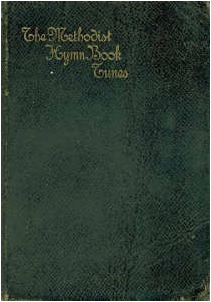Camille Saint-Saëns (1835-1921) was one of the most productive and famous French composers of the ninteenth century. Not only was he a highly gifted musician (a piano prodigy, organist and composer) he was also a scholar in the areas of science (astronomy and archaeology) and mathematics. On top of all of this, he was also a man of Letters. After studying the French classics (he once edited the complete works of Rousseau), he was also proficient in Latin. It may be his love of this language that inspired him to write his Oratorio de Noël in Latin.
Indonesian Lagu Sion Music For Your Church Services Near Me

Saint-Saëns's Oratorio de Noël was writen in 1858 at the age of 23. This piece was originally scored for five vocal soloists, chorus, harp, string quartet and organ.
An oratorio is to all intents and purposes an opera on a religious subject. Like opera, the oratorio is a composition for chorus, vocal soloists, and orchestra. Oratorio differs from opera in that it has no acting, scenery, or costumes. Unlike other forms of relgious music, the oratorio was not actually part of a church service. (During the Baroque period in opera-crazed Italy, oratorios were prized as an entertainment substituting for opera during Lent, a season of abstinence from opera as well as other worldly diversions.) Oratorios can be very dramatic works having a specific plot (such as Mendelssohn's Elijah) or more contemplative as in Saint-Saëns's Oratorio de Noël .
Saint-Saëns did not neglect the fact that an oratorio is a musical drama. He uses music, both instrumental and vocal, to highlight various aspects of the Christmas story. The Oratorio de Noël opens with a Prelude subtitled 'In the style of Sebastian Bach' harkening back to Bach's Christmas Oratorio. This opening prelude sets the scene for the Christmas story: its lilting pastoral quality creates images of the shepherds tending their flocks in the fields. In the remaining movements, the vocal soloists take turns representing different characters such as the narrator of the story or as the angel who announces the birth of the baby Jesus while the chorus represents a multitude of angels singing to the glory of the Lord (second movement: recitative and chorus). For the Quintet and Chorus (ninth movement), Saint-Saëns uses the melody from the prelude to begin drawing the work to a close. The final movement of the piece, which follows the model of old French Christmas songs, is a virtual hymn of praise of all creation in the presence of God.

Parts/Movements
Share prayer requests with your group channels. Create polls - Reply to past messages - Group channels can now have up to 2,000 people. Fixed: - Fixed issue where typing indicator appeared in the wrong channel. Fixed issue causing the channel artwork to not update. Come, Thou long expected Jesus, (Hyfrydol) - Quality music for congregational singing, prepared by church musicians. Large range of public domain old traditional hymns and modern songs. Variety of musical styles. Includes words and scores for public domain hymns.
Indonesian Lagu Sion Music For Your Church Services Online
- Prélude
- Récit et chœur. Et pastores errant / Gloria in altissimis Deo
- Air. Expectans, expectavi Dominum
- Air et chœur. Domine, ego credidi / Qui in hunc mundum venisti
- Duo. Benedictus, qui venit in nomine Domini
- Chœur. Quare fremuerunt gentes?
- Trio. Tecum principium
- Quatuor. Alleluia
- Quintette et chœur. Consurge, Filia Sion
- Chœur. Tollite hostias
Appears On
Indonesianlagu Sion Music For Your Church Services Online
| Year | Title / Performer | Label / Catalog # | AllMusic Rating |
|---|---|---|---|
| 2018 | Various Artists | PH 18084 | |
| 2013 | Robert Rieder / St. Augustin Choir | STA 3582 | |
| 2010 | Various Artists | 224065 | |
| 2008 | 736658 | ||
| 2007 | 83352 | ||
| 2005 | 5023 | ||
| 2005 | Cantate | ||
| 2005 | Proprius-AudioSource | ||
| 2004 | 14594 | ||
| 2003 | 40418 | ||
| 1999 | 253 | ||
| 1994 | Capriccio Records | ||
| 1993 | 68059 | ||
| 1990 | Delta Distribution / Laserlight | ||
9016 | |||
Calig | |||
Laserlight |





